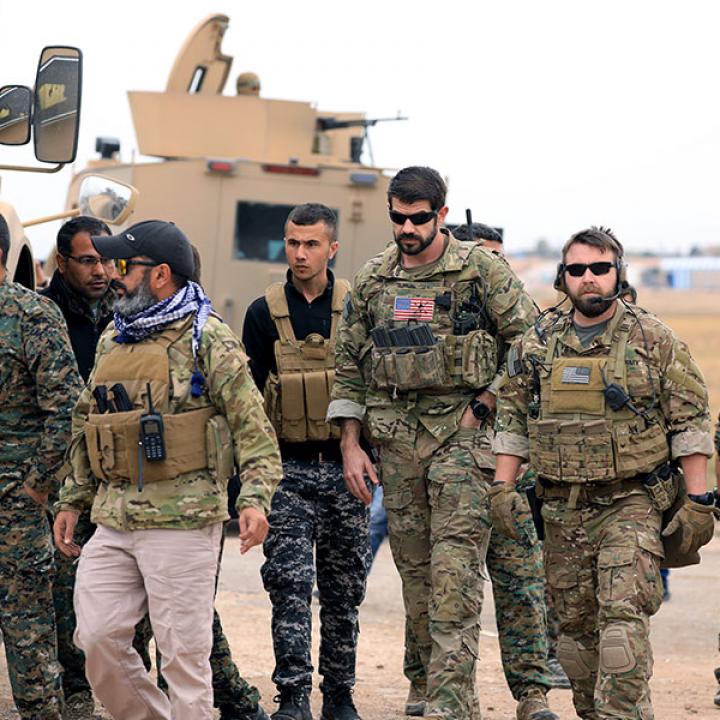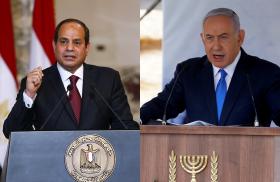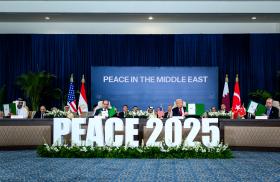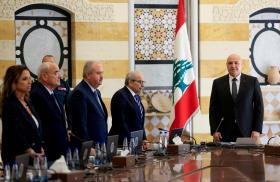
- Policy Analysis
- PolicyWatch 4047
Reducing the U.S. Presence in Syria Too Quickly Could Help the Islamic State

Besides testing Syria’s new authorities on a mission they are not yet ready to handle by themselves, Washington also has an unprecedented chance to curtail the group in areas that were difficult to reach under the old regime.
On June 2, U.S. officials reportedly revealed that 500 American troops have been withdrawn from Syria in recent weeks, bringing the total presence to about 1,500 personnel if true. Other reports indicate that this consolidation will continue by further reducing troop numbers and closing all but one U.S. base. Yet until the new government in Damascus or other actors prove they can take on the main U.S. mission in Syria—fighting the Islamic State (IS)—making further reductions could jeopardize U.S. policy goals in Syria and beyond.
Avoiding this risk requires a more flexible drawdown, with around 1,000-2,000 U.S. troops operating from more than one base. Such an approach would support two of the top priorities that President Trump expressed to President Ahmed al-Sharaa during their May 14 meeting: helping to prevent an IS resurgence and assuming responsibility for IS detention centers in the northeast. It would also enable Washington to work with local factions via the crucial base at al-Tanf, continue supporting America’s most battle-tested partner against IS, the Kurdish-led Syrian Democratic Forces (SDF), and exert leverage over the new government’s efforts to integrate armed groups.
Indispensable Then, Indispensable Now
The jihadist faction that President Sharaa led prior to ousting Bashar al-Assad—Hayat Tahrir al-Sham (HTS)—has been at war with IS since 2013. At the time, the group that would eventually become IS broke off from al-Qaeda and announced that it would expand operations from Iraq into Syria. HTS (then called Jabhat al-Nusra) refused to merge with the new group; instead, it wound up fighting IS while seizing and holding an enclave in Idlib province and splitting from al-Qaeda in subsequent years.
Given the multitude of challenges facing the new Syria, however, Sharaa’s government does not yet have the capacity to singlehandedly tackle the counter-IS mission on a nationwide level. For now, the United States is the only actor with the requisite experience and capabilities to manage that fight effectively. Washington originally created the multinational coalition to combat IS more than a decade ago and partnered with the SDF and its progenitors to roll back IS gains. Since 2016, U.S. forces have maintained multiple bases across northeast Syria and al-Tanf garrison in the southwest. On the latter front, the United States trained and partnered with the 600-man Syrian Free Army (SFA), a group of local Arab tribesmen and Syrian military defectors who joined the opposition and were known as Jaish Maghawir al-Thawra up until 2022.
In October 2019—a few months after IS lost its last bit of territory in Syria—President Trump ordered a drawdown, and the U.S. mission shifted from waging military offensives to overseeing counter-insurgency operations and securing camps and prisons holding a mix of displaced Syrians, IS fighters, and their families. At the same time, Turkey invaded from the north and seized territory from the SDF, which it considered an enemy due to its association with Ankara’s longtime nemesis, the Kurdistan Workers Party (PKK). By early 2021, U.S. troop levels had fallen to 900, but this smaller presence still provided ample responsiveness, enabling forces to conduct raids (including the targeted killing of two IS leaders), deal with emergencies (like mass prison breaks), and provide air support to SDF operations.
The situation shifted on October 7, 2023, when Hamas’s attack on Israel sparked the Gaza war and Iran ordered its proxies to strike U.S. forces in Syria and Iraq. In response, Washington surged its presence in Syria back to around 2,000 troops.
The New Security Environment
Today, the U.S. strategic outlook in Syria has shifted yet again following Assad’s fall and Sharaa’s rise. On one hand, Iran’s departure from Syria and Israel’s military victories against Tehran’s proxies have changed the post-October 7 threat picture in the Levant. On the other hand, Assad’s departure has given coalition and partner forces an opening to more actively target IS in areas that were formerly harder to reach. Under Assad, the organization operated with relative freedom in the Badia, Syria’s sparsely populated central desert region that covers about 55 percent of the country. His regime’s weakness and unwillingness to seriously combat IS enabled the group to build strength there while limiting what the coalition could do in response.
Immediately after Assad’s fall, U.S. forces took the welcome first step of conducting dozens of airstrikes on IS targets in the Badia, while the SFA expanded the zone of control around al-Tanf up to Palmyra. In mid-April, however, military officials reportedly revealed plans for consolidating U.S. forces, with an initial reduction of 600 troops followed by an assessment after sixty days to consider further reductions. Some bases were to be closed under this plan as well, with troops limited to al-Tanf and parts of Hasaka province, where many IS members and affiliates are detained among the 40,000-plus individuals held at the Roj and al-Hol camps and the 9,000 individuals held in local prisons. Yet U.S. Ambassador Tom Barrack reportedly told Turkish media this week that only one base would be retained.
Such a reduction would be dangerous at a time when local and international actors are unable to fully confront the persistent IS threat without ample U.S. support. To be sure, the new Syrian government continues to fight the group. In January, it foiled an IS plot to bomb a major Shia shrine near Damascus, reportedly acting on U.S. intelligence. It has also arrested IS cells, including the chief of the group’s “Iraq Province” on February 15. On May 18, however, IS carried out its first successful attack on the new government, bombing a security post in Mayadin and killing five people. Moreover, Damascus is increasingly busy with rebuilding the state and addressing the humanitarian crisis, while the March massacre of Alawites in western Syria starkly demonstrated its lack of full control.
Allies in Europe likewise lack the capacity to replace the U.S. contribution, despite their laudable commitments to the counter-IS mission. Turkey is not fully up to the task either. Although it has supported Sharaa’s government and launched a regional counter-IS platform with Jordan and other neighbors, the role of this platform in actually fighting the group remains unclear. Presumably, Ambassador Barrack will be discussing these issues further as part of his current visit to Israel.
So far, U.S.-led airstrikes and joint efforts with the SDF and SFA have seemingly prevented IS from exploiting Assad’s ouster. With coalition support, the SDF has continued its robust counterterrorism efforts, including a major sweep of al-Hol in April to dismantle IS cells. Moreover, the SDF reached a tentative agreement with Sharaa in March to integrate into the new Syrian military. Yet many of the details behind this merger still need to be resolved, including how centralized command and control will be, who will secure detention facilities in the northeast, and what will happen to the SDF’s all-female unit under a government run by former jihadists.
The Way Forward
To continue securing IS detention facilities, enabling SDF and SFA operations, and hunting IS across Syria, a sufficient U.S. presence is necessary. Now is the time to double down on counter-IS efforts and more actively seek targets in the Badia and other areas that were formerly difficult to reach. The current number of U.S. troops and bases is adequate for this and other top-priority tasks, namely:
- Training and supporting the SDF in Hasaka and the SFA around al-Tanf
- Providing a reserve for emergencies like prison breakouts
- Sufficiently supporting intelligence, air, and special operations throughout Syria as needed
Washington should also coordinate more deeply with the new government to test its potential as a long-term partner against IS. For example, U.S. forces could help oversee joint government/SDF/SFA activities aimed at augmenting anti-IS efforts in the Badia. Such proof of Sharaa’s good faith could open additional opportunities for U.S. forces to pursue secondary missions in support of common interests, such as removing unexploded ordnance, disposing of chemical weapons, and locating missing persons.
In addition, the administration should consider small, perhaps temporary outposts or deployments to increase operational reach and flexibility against IS. Maintaining a presence in Deir al-Zour province would be prudent, as would forays into Raqqa and/or Kobane.
Joint efforts with local actors could also help clarify issues surrounding the SDF’s integration into the national military. The SDF has proven to be the most reliable partner against IS in Syria, and robustly supporting it would signal that Washington has no intention of abandoning this partnership. This message would also boost the SDF’s leverage in negotiations with Damascus.
As the Trump administration considers further troop reductions over time, it should condition any such action on substantial, measurable progress in the counter-IS campaign and effective cooperation between the SDF and Damascus. The new government needs to demonstrate that it can take on the fight and work well with the United States and the SDF. If Damascus proves uncooperative or defers to Turkey’s interests, IS would be in a better position to regenerate, and further U.S. drawdowns would only facilitate the group’s resurgence.
Ido Levy is an associate fellow with The Washington Institute’s Military and Security Studies Program and a PhD candidate at American University’s School of International Service.



